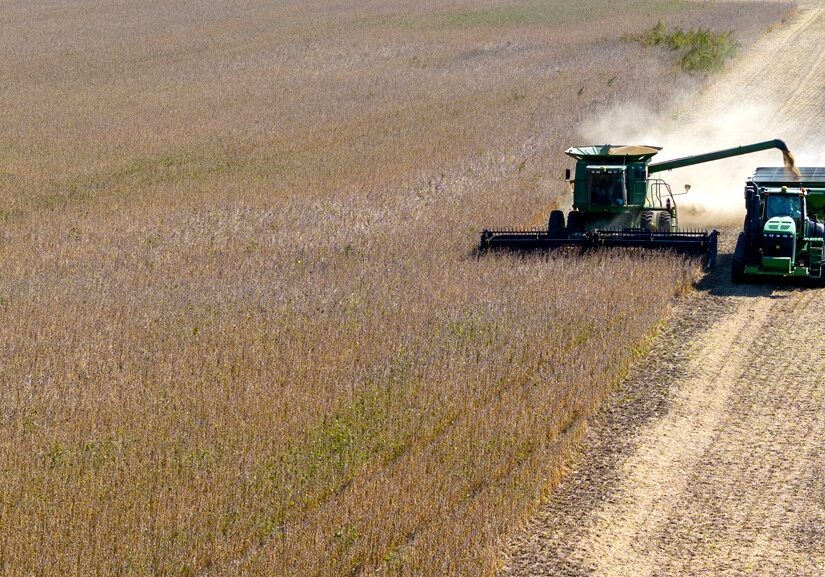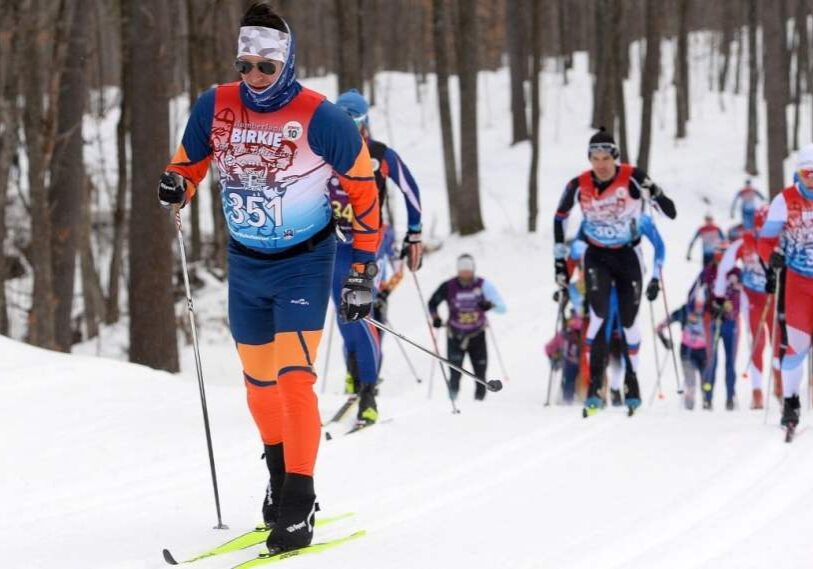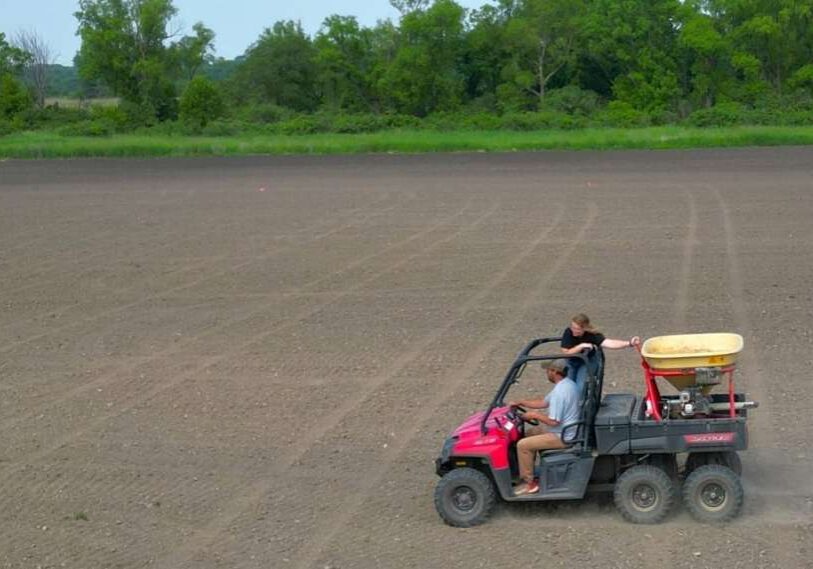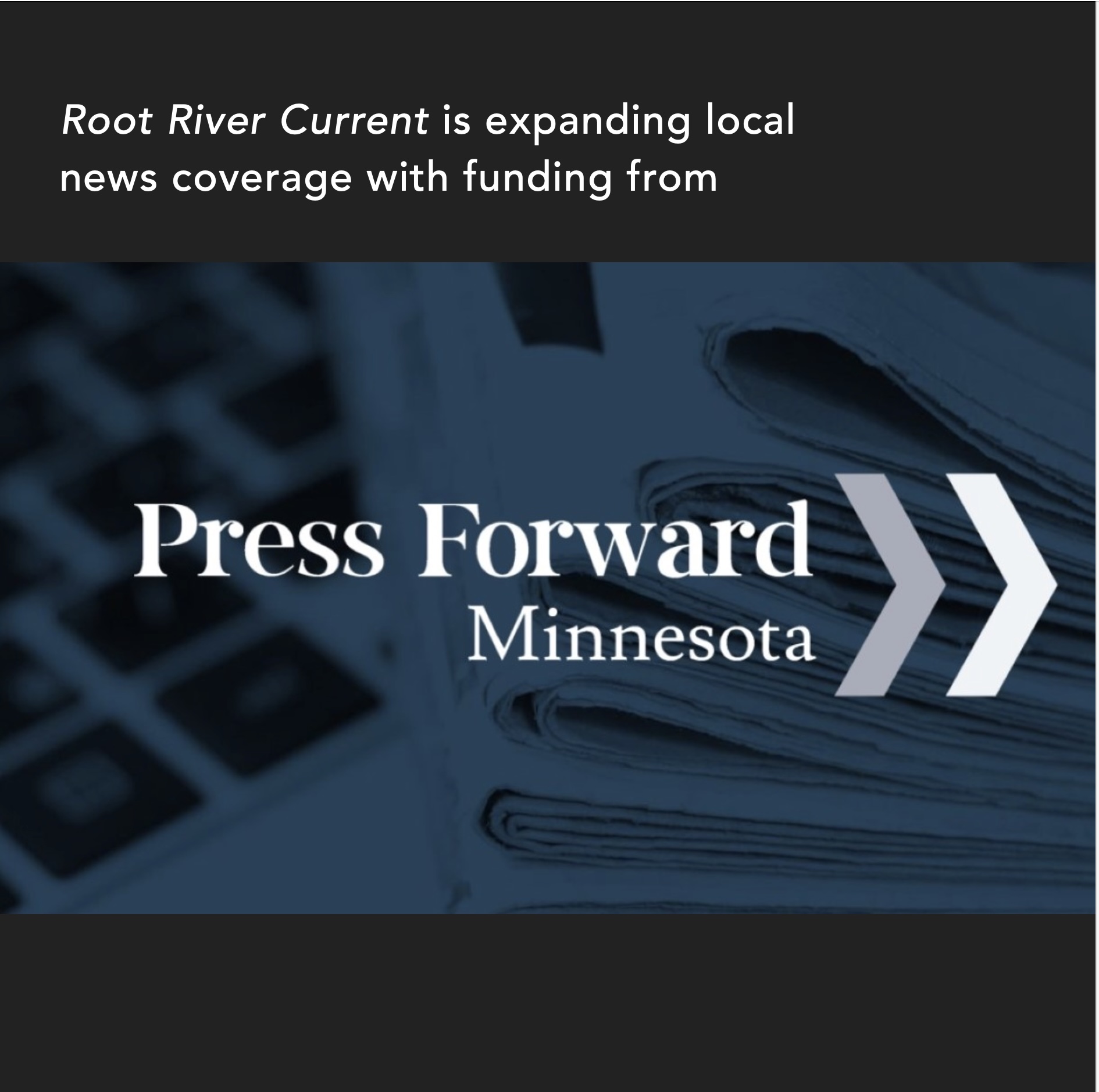Citizen Working Group Releases Nitrate Report
Commissioned by the state, regional recommendations will be part of the public record

LANESBORO – Bonnie Haugen, who farms with her husband Vance near Canton in southern Fillmore County, wasn’t sure what to make of the group assembled to make recommendations to state agencies about how best to address nitrate contamination in drinking water.
“Each of us came with our own perspective,” Haugen said, “but by the end of it we came to the conclusion that we all cared about clean water.”
The Southeast Minnesota Nitrate Strategies Collaborative Work Group has released its recommendations on how best to address nitrate contamination of drinking water in the eight karst counties of Southeast Minnesota. A ceremony in conjunction with the release of the report was held at Sylvan Park in Lanesboro July 9, 2025.
The long-time issue of nitrate contamination in ground water in southeastern Minnesota came to a head two years ago when, on April 24, 2023, a group of petitioners requested that the federal Environmental Protection Agency (EPA) use its emergency powers to address groundwater contamination that presents a risk to the health of the residents living in the karst region.
The EPA subsequently requested immediate action in addressing nitrate contamination to public and private wells in Dodge, Fillmore, Goodhue, Houston, Mower, Olmsted, Wabasha and Winona counties.
On January 12, 2024, the Minnesota Department of Health (MDH), Minnesota Department of Agriculture (MDA) and the Minnesota Pollution Control Agency (MPCA) submitted a work plan to the EPA outlining the state’s next steps in three phases that included:
- Outreach to residents with excessive nitrate contamination; provide alternate drinking water to vulnerable populations.
- Public health intervention to ensure safe drinking water for private well users in the mid-term.
- Development of long-term strategies to reduce nitrate concentrations in aquifers that provide drinking water.
As part of Phase 3 of this work plan, the MPCA and MDA convened a work group to address nitrate in Southeast Minnesota. The mission of the group was to better understand the challenges of addressing nitrate pollution, build consensus on nitrate reduction strategies and make recommendations on mitigation activities.
The 16-member group, many of them farmers representing the karst area’s eight counties, met one-day each month over the past year to discuss ways to address nitrate contamination. In addition, there were three ex-officio staff from state agencies advising the work group.
Aaron Bishop, Fillmore | Jan Blevins, Olmsted | Doug Cieslak, Winona | Andrea Eger, Houston | Warren Formo, Goodhue | Glen Groth, Winona | Bonnie Haugen, Fillmore | Beau Kennedy, Goodhue/Wabasha | Martin Larsen, Olmsted | Dave Mensink, Fillmore | Jeff Pagel, Olmsted | Thomas Pyfferoen, Dodge | Henry Stelten, Goodhue | Mark Thein, Olmsted | Mary Thompson, Houston | Rita Young, Winona
Karst landscapes
Karst geology consists of fractured limestone bedrock and thin topsoil (less than 50 feet) that allows surface water to enter groundwater with little or no filtration. Karst is evidenced by sinkholes, caves and streams.
In Fillmore County alone, there are more than 10,000 sinkholes. Department of Natural Resources (MDNR) dye tracings have shown that surface water that goes into the ground can travel up to 10 miles underground from a source point (see how groundwater moves in Karst landscape).
Contaminants on the land can enter the groundwater via a rain event or spring thaw. According to the MPCA, while not the only source, nitrate contamination – more than 70 percent – comes from agricultural practices that include applying liquid nitrogen before planting or the application of animal manure to fields.
Participation in the work group included education and research. “We all learned something,” Haugen said. “I thought I knew about karst geology, but I learned a lot about sinkholes, fractures and joints in the landscape.
“You just can’t dig a deeper well,” Haugen emphasized. “You can’t dig yourself out of this problem.”

Karst geology consists of fractured limestone bedrock that allows surface water to enter groundwater with little or no filtration. (MPCA image)
Noting that approximately 300,000 people residing in this eight-county karst region rely on public water systems (which are typically treated), with an estimated 94,000 people using private wells, the EPA estimates that there are over 9,000 people at risk of consuming water at or above the maximum contaminant level (MCL) for nitrate [10 milligrams-per-liter (mg/l) or 10 parts per million].
Nitrate pollution has been linked to Blue Baby Syndrome as well as birth defects and a range of cancers.
Report of recommendations
Recommendations in the report were arrived at by consensus, with all members endorsing the final recommendations. They also acknowledged that addressing nitrate in groundwater requires system change and that no single group can solve this issue.
Each recommendation came with suggested actions to be taken. The report’s four main items are:
- More living roots in the ground for longer periods. This will incrementally reduce nitrate in groundwater. Federal and state programs should enroll more acres in conservation programs and incentivize hay, pasture and grazing programs.
- Support alternative crops and land uses. Minnesota must invest money and write policy that supports alternative crops (other than corn and soybeans) in the region and guarantee a specified return per acre for farmers who enroll acres in exploratory programs.
- Support and increase implementation of nitrogen Best Management Practices (BMP). Source control BMP can improve fertilizer efficiency practices and save producers money. Establish a conservation agronomist certification program. Consider Best Management Practices for cropland.
- Education and Outreach. Work at multiple levels in the education system, coordinate messaging and communicate with those that impact nitrate levels.
Read the group’s full report and suggested actions online at Report of Recommendations.

Bonnie Haugen, a farmer from near Canton, was one of the 16-member Southeast Minnesota Nitrate Strategies Collaborative Work Group participants. The work group was commissioned by state agencies and its report (pictured) will be part of the public record. (Photo by John Torgrimson)
Reaction to the report
Not everyone was happy with the report or its recommendations.
The Minnesota Crop Production Retailers (MCPR) believes the recommendations were incomplete as no one representing agricultural retail or sales agronomists were involved. MCPR maintains “the report fails to capture the level of precision agricultural practices and the high-quality agronomic recommendations that are currently being implemented across southeast Minnesota.
Meanwhile, Representative Brad Finstad (R-Minnesota 1st Congressional District) has called on the EPA to rescind its 2023 decision, claiming the original petition was made by anti-agricultural environmental activists. In a letter to the EPA dated July 17, 2025, Finstad called the petition politically motivated and urged the EPA “to withdraw the resulting November 2023 letter to state agencies in Minnesota.”
Finstad has been opposed to the nitrate mitigation efforts since the EPA ruled two years ago. In the event that the EPA does rescind its letter, it is not clear how that would affect actions already taken by the state of Minnesota to mitigate nitrate contamination.
Regardless, nitrate contamination in groundwater won’t go away soon.
Haugen emphasizes there is not one answer to the groundwater problem.
“We need many tools, many people – agencies and farmers working together. The Work Group is not writing the rules – policy people write the rules – we’re just making recommendations.”
(Below, Bonnie Haugen discusses the work group’s recommendations.)
Additional articles on water quality published by Root River Current:
Minnesota Launches First Phase of Nitrate Mitigation Plan
Southeast Minnesota Runoff Pollutes Beyond Local Area
Minnesota Nitrate concerns inspire Iowa groups to seek EPA help
Nitrate and Water Issue Proposals Addressed by 2024 Minnesota Legislature
State Officials: January 2024 Plan Addresses Nitrate Contamination Issues
What Happens When Feedlots Get Bigger in Karst Country?
Walk The Walk And Talk The Talk, Too looks at how area farmers are working to achieve their goals for land stewardship, their families and communities.
Root Causes, Root Solutions explores a Houston County dairy farmer’s practices to control runoff and soil erosion.
Related coverage
Environmental, conservation groups apply pressure on nitrate contamination in southeast Minnesota from MPR News






